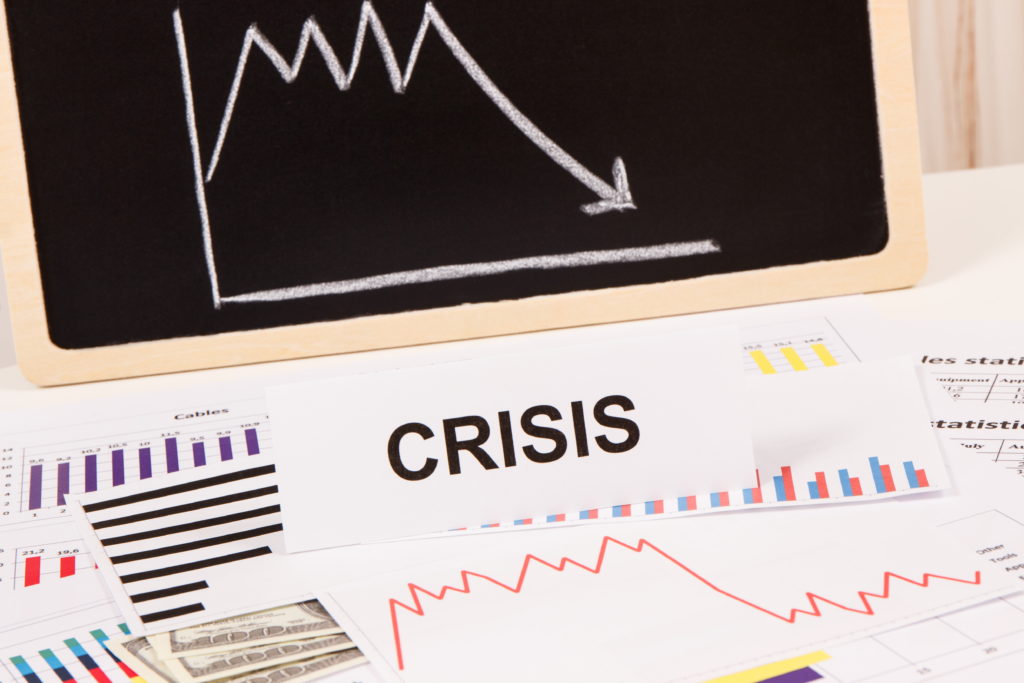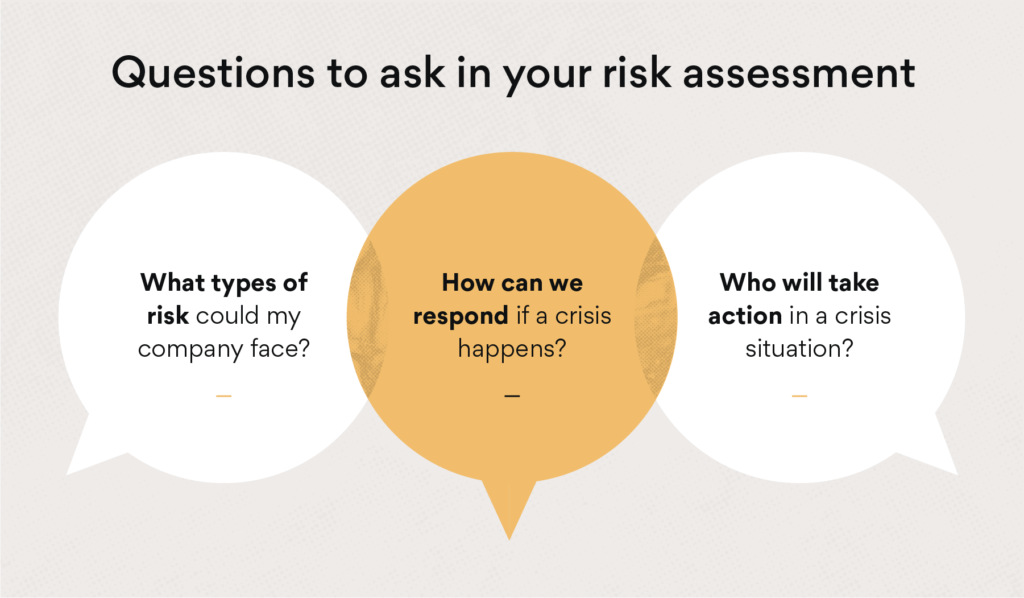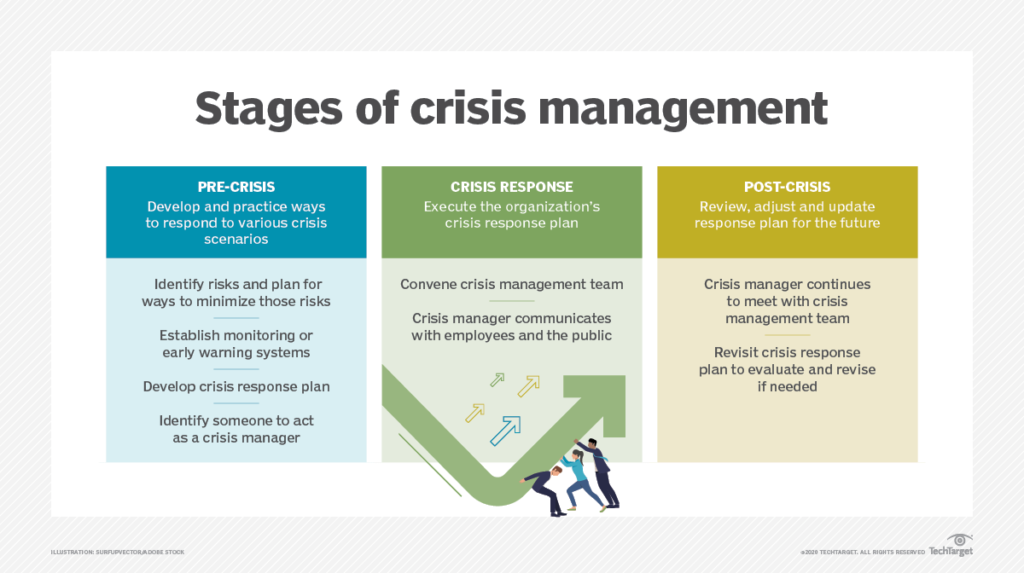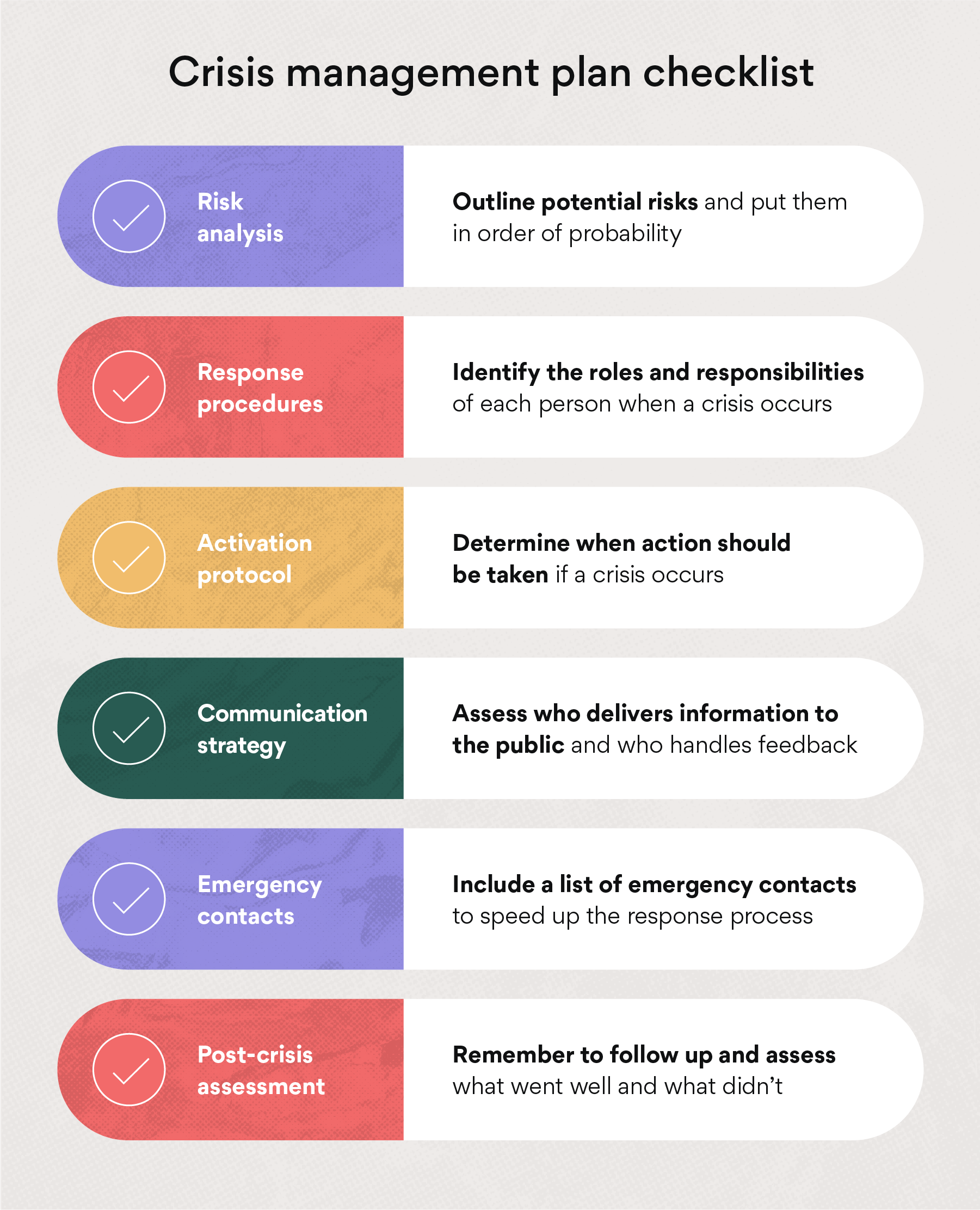Easiest Techniques to Survive any Crisis: a guide for Small Businesses
Predicting the future is impossible, but one thing is certain: crises are real and recurring. Businesses must be prepared for unexpected challenges, from recessions and health crises to inflation, wars, and data breaches. In this guide, we will explore the process of preparing your small business for any crisis. Understanding the strategies and techniques to navigate difficult times can position your business for resilience and success. So, let’s dive in and learn how to weather any storm.
CEO & Business Owners Mistakes
The recent pandemic and economic recession are poignant examples of crises and their impact on companies. They have led to bankruptcies, layoffs, and disrupted economies worldwide. Small businesses, which form the backbone of many economies, often bear the brunt of such crises.
A crucial element in effectively recovering from a crisis is maintaining sales. Without a steady inflow of money, businesses cannot survive. It’s as simple as that. Unfortunately, many business owners fail to recognize the importance of defining and developing sales strategies specifically tailored for times of crisis. This oversight can be attributed, in part, to the lack of specialized sales knowledge among business owners and CEOs.
Sales strategies during crises differ significantly from those implemented during regular times. During emergencies, our clients’ mentality and economic power often undergo drastic changes. Consequently, their priorities shift, ultimately impacting sales dynamics.
In the subsequent sections of this guide, we will explore effective sales strategies to navigate crises successfully. We will explore techniques that allow businesses to adapt to changing customer behaviors and preferences, seize new opportunities, and maintain a sustainable revenue stream. By adopting these strategies, small businesses can position themselves to not only survive but also thrive during times of crisis.
Stay tuned for the upcoming sections, where we will explore practical tips and insights to help your business withstand any storm and emerge stronger on the other side.
What do you need during a crisis?

Training and practice are essential to have before and during a crisis. In almost all professions, practice is required to achieve knowledge beyond the basics. When you don’t practice, you cannot internalize what you have learned.

Training (Formation)
It would be best if you implemented a culture that is ready for any crisis. As the owner or CEO of a company, you must train your employees. Remember, your employees are your allies, your right hand, the people who will help you bear the burden. So, a well-trained group is a company with a better chance of resisting a crisis.
What your team must know (among many other things):
- Their roles and responsibilities during a crisis and how to help other organization members.
- How to achieve the assigned goals: according to different scenarios.
- They must know how to make the best decisions for the company when necessary.
- Know management of administrative crises: if there is no leader, they must know how to continue their work.

Develop a crisis containment plan that includes:
In an unpredictable world, disasters are something that companies have to deal with. Whether it’s a natural disaster, an economic slowdown, or something unexpected, every business needs a well-thought-out plan for dealing with a crisis. This part will show you how to put together a complete crisis control plan to protect your business and lessen the damage that could happen.
- Risk Assessment: Do a full risk assessment to determine what problems could affect your business. Look at internal and external factors, such as operating weaknesses, market risks, and possible threats. If you know your business’s unique risks, you can make your plan for handling a problem fit those risks.
- Communication plan: Make sure you have a clear and efficient communication plan with internal and external partners. Figure out how you will share important information, work with staff, talk to customers, and answer questions from the media. It’s important to communicate quickly and openly during a disaster to keep trust and control expectations.
- Emergency Response:
- Set up procedures for how to act right away in a situation.
- Set up roles and tasks for necessary staff, name people to call in an emergency, and list steps to ensure workers, customers, and assets are safe.
- Make plans and processes for what to do quickly in case of different kinds of emergencies.
- Business Continuity:
- Make a business continuity plan to ensure that essential functions continue to run during a crisis.
- Find the most critical processes, tools, and resources needed to keep running.
- Set up backup plans, ways to work from home, and other providers to keep critical services running and minimize disruptions.
- Support from stakeholders: Consider what your workers, buyers, suppliers, and the community need and care about. Write down ways to help and support these people during and after a crisis. This can include programs to help employees, ways to help customers, or efforts to reach out to the community.
- Regular Testing and Evaluating: Use exercises and drills to regularly test and evaluate your plan for dealing with a crisis. Find places where the plan could improve and make the necessary changes to stay valuable and up-to-date. Crisis management is an ongoing process, and it’s vital to keep evaluating to stay ready.

Preparation of a crisis-proof sales plan
This are examples of real situations a small business can confront and the best strategies they can use to overcome.
Public Health Crisis (e.g., COVID-19):
Examples include pandemics, disease outbreaks, or health emergencies that can result in widespread health risks, government-imposed restrictions, and changes in consumer behavior.
- Enhance online presence: Invest in an optimized website, advertising, and social media to reach customers who prefer digital channels.
- Offer contactless delivery or curbside pickup: Provide safe and convenient options for customers to receive products or services.
- Create virtual experiences: Develop virtual consultations, webinars, or classes to engage customers remotely.
- Implement rigorous health and safety protocols: Assure customers of a safe environment by following recommended guidelines and communicating hygiene measures.
- Focus on essential products or services: Prioritize and promote products or services that meet immediate needs during the crisis.
- Develop partnerships: Collaborate with complementary businesses to cross-promote offerings and reach a wider audience.
- Leverage online marketplaces: Explore opportunities to sell products or services through established e-commerce platforms.
- Offer flexible payment options: Provide installment plans, deferred payment options, or discounts to ease financial burdens.
- Provide exceptional customer service: Prioritize timely responses, empathetic communication, and proactive support to build trust and loyalty.
- Show empathy and support: Demonstrate understanding of customers’ challenges and provide resources or initiatives to help them navigate the crisis.
Economic Crisis:
Such as recessions, economic downturns, or financial instability that can impact consumer spending, business operations, and overall market conditions.
- Review pricing strategy: Adjust pricing to remain competitive while ensuring profitability during challenging economic conditions.
- Focus on value proposition: Highlight the unique value your product or service offers and how it can address customer needs effectively.
- Target new customer segments: Identify untapped markets or customer groups that may have different spending patterns during an economic downturn.
- Optimize operational efficiency: Streamline processes, reduce waste, and explore cost-saving measures to maintain profitability.
- Diversify revenue streams: Explore new product lines, services, or partnerships to create additional revenue sources.
- Develop customer loyalty programs: Offer incentives, discounts, or exclusive benefits to encourage repeat business and customer retention.
- Strengthen relationships with existing customers: Provide personalized experiences, stay connected through targeted communications, and seek feedback to enhance customer satisfaction and loyalty.
- Focus on customer acquisition and retention: Allocate resources to both attracting new customers and nurturing existing ones.
- Monitor market trends: Stay informed about shifts in consumer behavior, emerging needs, and competitor strategies to adapt and capitalize on opportunities.
- Seek financial support or assistance: Research government grants, loans, or other financial programs available during an economic crisis to support your business.
Natural Disaster Crisis:
Including events like hurricanes, floods, earthquakes, wildfires, or severe weather conditions that can cause physical damage, disrupt supply chains, and affect business continuity.
- Establish a crisis communication plan: Ensure clear and timely communication with customers, suppliers, and employees during and after the natural disaster.
- Support relief efforts: Contribute to local recovery efforts or collaborate with charitable organizations to assist affected communities.
- Adjust business hours or operations: Modify operating hours or temporarily relocate to continue serving customers during the crisis.
- Collaborate with other businesses: Partner with neighboring enterprises to jointly promote recovery initiatives or shared resources.
- Offer discounts or special offers: Provide discounts or promotional deals to stimulate sales and support customers affected by the disaster.
- Implement disaster preparedness measures: Develop protocols to safeguard assets, secure data, and protect inventory in anticipation of future disasters.
- Leverage social media and local networks: Utilize platforms to inform customers about your status, updates, and recovery efforts.
- Provide post-disaster services: Offer repair, restoration, or rebuilding services to support customers in recovering from the disaster.
- Prioritize community engagement: Participate in local events or initiatives to foster goodwill and support community resilience.
- Adapt product or service offerings: Modify your offerings to cater to specific needs due to the natural disaster.
Supply Chain Crisis:
Arising from disruptions in the supply chain, such as supplier failures, transportation issues, trade disputes, or global crises impacting logistics and inventory availability.
- Diversify suppliers: Identify alternative suppliers to reduce dependency on a single source and mitigate disruptions.
- Establish contingency plans: Develop backup plans for sourcing essential materials or products during supply chain disruptions.
- Improve communication with suppliers: Maintain open lines of communication to address challenges and collaborate on solutions.
- Explore local sourcing options: Identify suppliers to reduce reliance on global supply chains during disruptions.
- Develop strategic partnerships: Collaborate with suppliers or industry partners to navigate supply chain challenges.
- Maintain adequate inventory levels: Balance inventory management to ensure product availability during supply chain disruptions.
- Implement efficient forecasting and demand planning: Utilize data and market insights to anticipate demand fluctuations and optimize inventory management.
- Explore production diversification: Consider in-house production capabilities or alternative manufacturing options to minimize supply chain risks.
- Prioritize key products or services: Focus on offering and promoting high-demand or unique products to mitigate the impact of supply chain disruptions.
- Stay updated on industry trends: Monitor market trends, new technologies, and supply chain innovations to adapt and improve resilience.
Reputational Crisis:
Occurring due to negative publicity, customer complaints, product recalls, or public scandals that damage a business’s reputation and brand image.
- Communication that is open and proactive: Talk about the problem in the open, take responsibility for it, and give customers regular reports to win back their trust.
Monitor your online image. Keep an eye on social media, review sites, and online groups so you can quickly respond to and deal with any complaints or bad comments. - Apologize and fix: If you made a mistake, apologize sincerely and do what you must to fix the situation and rebuild trust.
- Talk to your customers: Engage with them meaningfully through individual conversations, polls, or focus groups to learn about their problems and improve your products.
- Showcase good customer experiences: Showcase the worth and quality of your product or service by sharing good comments, reviews, or case studies.
- Improve training for employees: Give training on customer service, handling a problem, and acting ethically to ensure that customers always have good experiences.
- Build relationships with influential people or people who like your brand: Work with important people or supporters to improve your brand’s image and trustworthiness.
- Use positive media coverage: Look for positive media coverage or public relations chances to show off your brand’s strengths and attempts to rebound.
Develop a corporate social responsibility plan. Show your commitment to ethical practices, social issues, or environmental projects to rebuild trust and improve your brand’s image.
Evaluate and improve your reputation management tactics regularly, take feedback into account, and change your approach to keep a good business image.
Technological Crisis:
A technological crisis can occur due to cybersecurity breaches, system failures, data breaches, or IT infrastructure issues that can compromise sensitive information, disrupt operations, and damage customer trust.
Strategies to address a technological crisis:
- Implement robust cybersecurity measures: Regularly update security protocols, use strong encryption, and educate employees about cybersecurity best practices.
- Backup data and establish disaster recovery plans: Regularly back up critical data and establish protocols for data recovery in case of system failures or breaches.
- Conduct regular vulnerability assessments: Identify potential weaknesses in IT systems and address them promptly to mitigate the risk of cyber threats.
- Train employees on data security: Provide comprehensive training on data handling, password security, phishing awareness, and other cybersecurity measures.
- Work with reputable IT vendors: Engage with trusted IT service providers to ensure the security and reliability of your systems.
- Develop an incident response plan: Create a step-by-step plan for responding to and recovering from technological crises, including communication protocols and legal considerations.
Legal and Regulatory Crisis:
A legal and regulatory crisis can occur due to legal challenges, lawsuits, regulatory non-compliance, or changes in legislation that can impact business operations, finances, and reputation.
Strategies to address a legal and regulatory crisis:
- Stay informed about laws and regulations: Regularly monitor changes in relevant laws and regulations that may impact your business.
- Seek legal counsel: Consult with legal professionals to ensure compliance with laws and regulations and to address any legal challenges.
- Maintain accurate and organized records: Keep thorough documentation of business activities, financial transactions, and compliance efforts.
- Develop internal policies and procedures: Establish clear policies and procedures that align with legal requirements and ensure compliance across the organization.
- Train employees on legal and regulatory matters: Educate employees about relevant laws, regulations, and compliance obligations to mitigate risks and ensure adherence.
- Communicate transparently: If facing a legal or regulatory challenge, communicate openly and transparently with stakeholders, taking appropriate legal advice.
Leadership and Management Crisis:
A leadership and management crisis can occur due to ineffective leadership, internal conflicts, or key personnel changes that disrupt decision-making, employee morale, and overall business performance.
Strategies to address a leadership and management crisis:
- Assess leadership capabilities: Evaluate leadership strengths and weaknesses to identify areas for improvement or necessary changes.
- Foster open communication: Encourage open and honest communication among team members to address conflicts and concerns proactively.
- Seek professional development opportunities: Invest in training and development programs to enhance leadership skills and decision-making abilities.
- Establish clear roles and responsibilities: Define roles, responsibilities, and reporting lines to ensure clarity and accountability within the organization.
- Build a strong organizational culture: Foster a positive work environment based on trust, respect, and transparency to promote employee morale and engagement.
- Plan for succession: Develop succession plans to ensure smooth transitions during key personnel changes or unexpected events.
- Seek external expertise or mediation: Consider bringing in external experts or mediators in severe internal conflicts to facilitate resolution.
Develop a plan to reach the customer
During a crisis, finding new ways to reach people and get goods or services to them quickly is important. Here are some important things to think about when making a plan to reach customers:
- Make a team to deal with shipments:
Set up a separate team or give roles to members of your current team to handle shipping and handling well. - Analyze shipping costs: Look at the choices for shipping and discuss rates with companies to make sure you can meet customer standards while keeping costs low.
- Analyze your inventory. Check your inventory levels regularly to make sure products are available and to avoid running out of stock or having too much inventory when there is a lot of demand or a problem with the supply chain.
- Find staff or other people to help you deliver:
You could hire more people or work with a third-party transport company to increase your shipping options and make sure orders are filled on time. - Handle changes in prices: Look at how the market is doing, look at costs, and carefully handle changes in prices during and after a crisis. Find other ways to save money that won’t affect customers as much.
- Add value to your goods or services: Think of ways to make them more valuable, like solving customers’ pain points, giving them more help, or putting together products or services that go well together.
- Offer payment plans: Include choices for payment plans to help customers in financial trouble. This can help keep sales going and help customers who may be having economic trouble.
Keep in touch with clients directly. Use social media, email marketing, or other ways to stay in touch with customers, give them information, and answer their questions. Use social media to connect with your viewers and build ties with them.
Stay up-to-date on tools for making payments over time:
Explore and add software like PayPal, Sezzle, Klarna, or Affirm that lets customers pay in installments, so you can offer customers easy payment plans.
Be ready and able to change: make a crisis response plan with a list of techniques to use in different kinds of crises. Evaluate and change your strategy based on real-time comments and how the market is changing.
By making a plan ahead of time for how to reach customers during a crisis, businesses can handle problems, keep sales up, and continue to offer important goods or services while adding value and meeting customer needs well. Businesses that are ready and able to change will be able to adjust quickly to changing situations and have a better chance of succeeding during hard times.
Practice
Nothing that is not practiced can be done well. To understand and manage a crisis, you must internalize your actions—practice as if in real scenarios. Then, find possible solutions and strategies for the well-being of the business.
There is nothing wrong with preparing. However, being prepared does not mean living in fear. Is to have the necessary tools to face any change that could lead the company to bankruptcy or closure.
Conclusion
In the end, problems are unavoidable, and small businesses need to be ready to handle them well. By making a crisis containment plan, companies can be ready for many different types of crises, such as economic downturns, natural disasters, public health emergencies, technological problems, and issues with their image.
A complete plan for dealing with a crisis includes ways to define roles and responsibilities, set up communication rules, do risk assessments, change goods or services, and put customer needs in order of importance. By focusing on these key areas, companies can better deal with the effects of disasters, keep customers happy, protect their brand image, and make sure they can keep doing business.
Also, businesses need to know how important sales tactics that are made for times of trouble are. Some ways that small businesses can do well in tough times are to change their marketing messages, improve their online presence, look for new customer groups, find different ways to make money and give great customer service.
By taking preventative steps, staying flexible, encouraging innovation, and keeping the customer in mind, small businesses can survive crises and grow and succeed. Preparation, flexibility, and a desire to improve are important parts of solving problems, taking advantage of chances, and building grit for long-term success.


